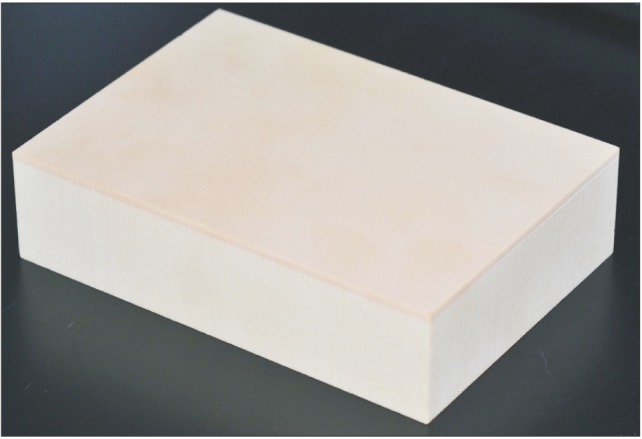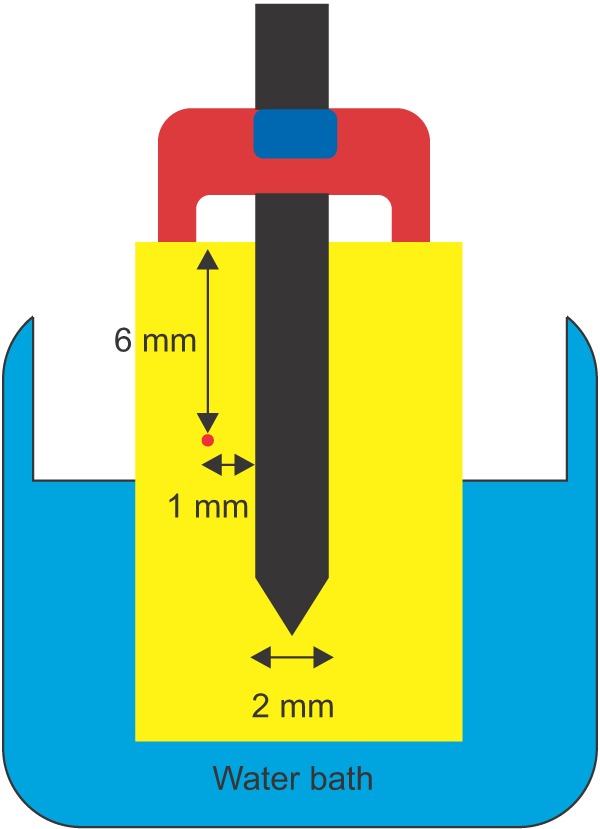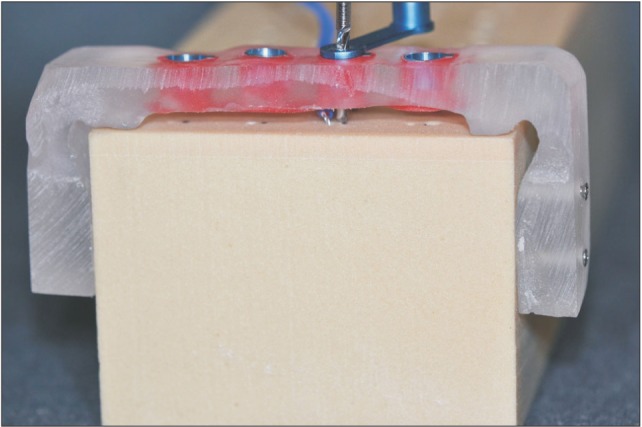J Korean Assoc Oral Maxillofac Surg.
2016 Feb;42(1):9-12. 10.5125/jkaoms.2016.42.1.9.
The effect of low-speed drilling without irrigation on heat generation: an experimental study
- Affiliations
-
- 1Department of Dentistry, Yonsei University Wonju College of Medicine, Wonju, Korea. choibh@yonsei.ac.kr
- KMID: 2189402
- DOI: http://doi.org/10.5125/jkaoms.2016.42.1.9
Abstract
OBJECTIVES
In this study we evaluated heat generation during the low-speed drilling procedure without irrigation.
MATERIALS AND METHODS
Ten artificial bone blocks that were similar to human D1 bone were used in this study. The baseline temperature was 37.0degrees C. We drilled into 5 artificial bone blocks 60 times at the speed of 50 rpm without irrigation. As a control group, we drilled into an additional 5 artificial bone blocks 60 times at the speed of 1,500 rpm with irrigation. The temperature changes during diameter 2 mm drilling were measured using thermocouples.
RESULTS
The mean maximum temperatures during drilling were 40.9degrees C in the test group and 39.7degrees C in the control group. Even though a statistically significant difference existed between the two groups, the low-speed drilling did not produce overheating.
CONCLUSION
These findings suggest that low-speed drilling without irrigation may not lead to overheating during drilling.
Keyword
Figure
Reference
-
1. Kim SJ, Yoo J, Kim YS, Shin SW. Temperature change in pig rib bone during implant site preparation by low-speed drilling. J Appl Oral Sci. 2010; 18:522–527. PMID: 21085811.
Article2. Giro G, Marin C, Granato R, Bonfante EA, Suzuki M, Janal MN, et al. Effect of drilling technique on the early integration of plateau root form endosteal implants: an experimental study in dogs. J Oral Maxillofac Surg. 2011; 69:2158–2163. PMID: 21530048.
Article3. Gaspar J, Borrecho G, Oliveira P, Salvado F, Martins dos Santos J. Osteotomy at low-speed drilling without irrigation versus highspeed drilling with irrigation: an experimental study. Acta Med Port. 2013; 26:231–236. PMID: 23815837.4. Misir AF, Sumer M, Yenisey M, Ergioglu E. Effect of surgical drill guide on heat generated from implant drilling. J Oral Maxillofac Surg. 2009; 67:2663–2668. PMID: 19925988.
Article5. Jeong SM, Yoo JH, Fang Y, Choi BH, Son JS, Oh JH. The effect of guided flapless implant procedure on heat generation from implant drilling. J Craniomaxillofac Surg. 2014; 42:725–729. PMID: 24332815.
Article6. Anitua E, Carda C, Andia I. A novel drilling procedure and subsequent bone autograft preparation: a technical note. Int J Oral Maxillofac Implants. 2007; 22:138–145. PMID: 17340908.7. Eriksson RA, Albrektsson T. The effect of heat on bone regeneration: an experimental study in the rabbit using the bone growth chamber. J Oral Maxillofac Surg. 1984; 42:705–711. PMID: 6593442.
Article8. Eriksson RA, Adell R. Temperatures during drilling for the placement of implants using the osseointegration technique. J Oral Maxillofac Surg. 1986; 44:4–7. PMID: 3455722.
Article9. Harris BH, Kohles SS. Effects of mechanical and thermal fatigue on dental drill performance. Int J Oral Maxillofac Implants. 2001; 16:819–826. PMID: 11769832.10. Chacon GE, Bower DL, Larsen PE, McGlumphy EA, Beck FM. Heat production by 3 implant drill systems after repeated drilling and sterilization. J Oral Maxillofac Surg. 2006; 64:265–269. PMID: 16413899.
Article11. Sharawy M, Misch CE, Weller N, Tehemar S. Heat generation during implant drilling: the significance of motor speed. J Oral Maxillofac Surg. 2002; 60:1160–1169. PMID: 12378492.
Article12. Carvalho AC, Queiroz TP, Okamoto R, Margonar R, Garcia IR Jr, Magro Filho O. Evaluation of bone heating, immediate bone cell viability, and wear of high-resistance drills after the creation of implant osteotomies in rabbit tibias. Int J Oral Maxillofac Implants. 2011; 26:1193–1201. PMID: 22167423.
- Full Text Links
- Actions
-
Cited
- CITED
-
- Close
- Share
- Similar articles
-
- Effects of a simplified drilling protocol at 50 rpm on heat generation under water-free conditions: an in vitro study
- A STUDY ON THE HEAT GENERATION OF BONE DRILLING BURS ACCORDING TO IRRIGATION DURING IMPLANTATION OF DENTAL IMPLANT
- Thermal changes during implant site preparation with a digital surgical guide and slot design drill: an ex vivo study using a bovine rib model
- Heat Production and Thermal Necrosis by Cortical Drilling
- The effect of guided flapless implant procedure on heat generation from implant drilling





